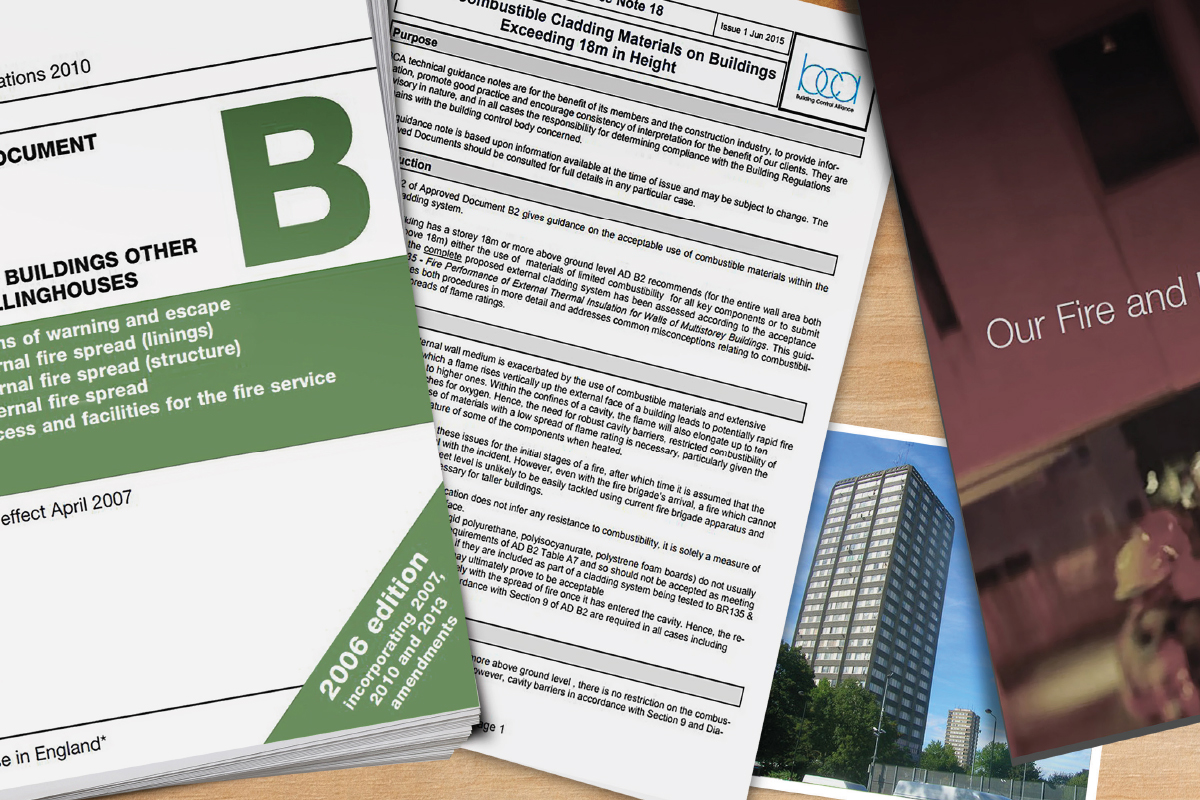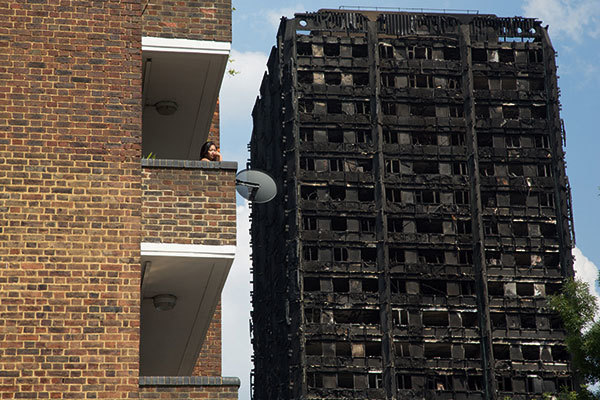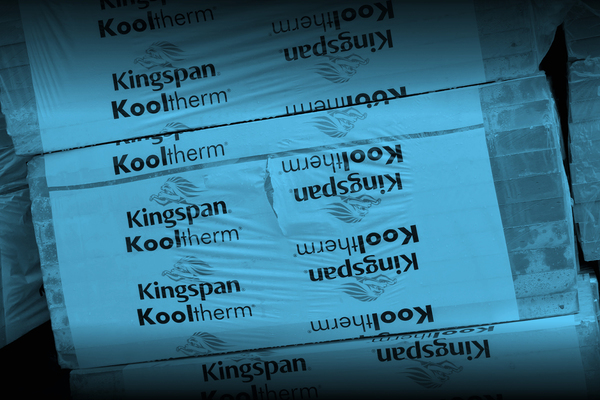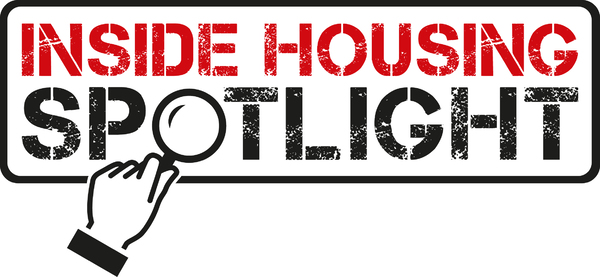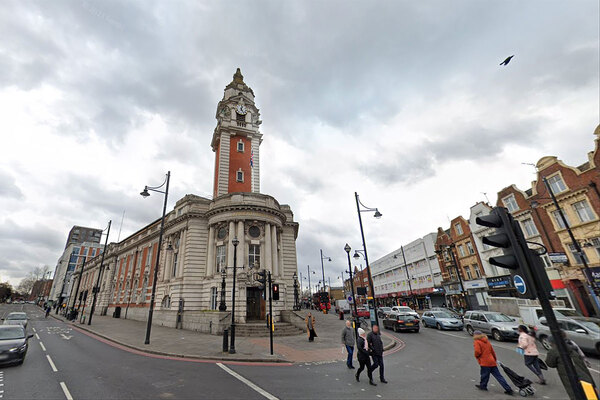You are viewing 1 of your 1 free articles
The rise of combustibles
Next week, Inside Housing will publish The Paper Trail – an investigation into how the system of building regulation led to Grenfell. Here is the first extract. Picture by Getty
The insulation material used on Grenfell was made by a company called Celotex, from a plastic called polyisocyanurate. This is a material that does not meet the minimum basic standard in official guidance on ‘limited combustibility’. It also releases poisonous cyanide gas when burnt. So how did it end up in use on a high-rise building?
The answer lies in a series of small tweaks to building regulations, carried out in the mid-2000s with little scrutiny. These introduced a wide exception to the previous ban on combustible insulation: it could now be approved based on the evidence of large-scale testing.
These tests involve setting fire to a nine-metre high model wall to see if fire spreads up the side. They are almost invariably done at the Building Research Establishment’s (BRE) laboratory in Watford, the only place in the UK with the necessary apparatus.
These tests are shrouded in secrecy.
The BRE does not release the results, deeming them commercially confidential, and leaves it up to individual manufacturers to tell the market what happened to their own products.
The BRE says this confidentiality is a requirement as a UKAS accredited test laboratory. "If we do not, we risk losing our accreditation," a spokesperson for the BRE said. "And those manufacturers that have tests done are required to represent them accurately in information to underpin the use of their products."
A test on the Celotex product used on Grenfell – in combination with non-flammable cement fibre insulation – was withdrawn in January after the manufacturer admitted “inconsistencies” between the test and the way it was marketed. What these inconsistencies were has not yet been revealed.
The BRE does not design the individual tests, leaving it up to manufacturers to decide what sort of fire breaks to use, what gaps to leave between panels and where to place the monitoring devices that determine a pass or fail in relation to the barriers.
Data from the tests is also used to clear untested combinations of materials, based on an assumption that they will also pass – a process known as ‘desktop studies’.
Approved Document B
To clearly understand how this picture has emerged as the status quo, we need to go back to the early-1990s.
In 1992, the government’s official guide to building regulations, Approved Document B, effectively banned combustible insulation outright and had no provision for large-scale testing.
But it was a fatal fire at Garnock Court in Irvine, Scotland, in 1999, which killed a 55-year-old disabled man, that first introduced the testing route.
A parliamentary inquiry into the fire was conducted by the cross-party Environment, Transport and Regional Affairs Committee.
Three key witnesses to this inquiry were from the BRE: Peter Field, Sarah Colwell and Tony Morris.
The BRE had been privatised in 1997 as one of the last acts of John Major’s government before Tony Blair took power. Now that it wasn’t a government agency, it was forced to rely on income from manufacturers who wanted to test their products.
It does this for many products, of which large scale fire testing is now only a small part, representing just 1% of its income.
When the inquiry began the BRE was in the middle of developing the large-scale testing method.
The minutes to the inquiry record that Mr Field said “all forms of cladding” should be tested using this method or other similar methods.
A spokesperson for the BRE adds that it is "categorically not the case" that the motivation in recommending full scale fire testing was because of a vested interest in growing a market for this form of test. "The point of the large-scale test was (and still is) that cladding systems with their full design should be tested as they are intended to be used on a building. This is to provide a full understanding of how an actual system will perform," the spokesperson added.
The review of Approved Document B which resulted from the inquiry introduced large-scale testing – but not quite as widely as Mr Field suggested.
Fire Note 9 – a document written by the BRE outlining the rules for testing – was officially endorsed by the 2000 version of the approved document. However, originally this test was only to be used for external surfaces that didn’t meet the requirements. There was still no way in for combustible insulation.
The 2000 version of the guidance stayed in place for six years, but discussions about changing it began as early as 2003, when John Prescott, then deputy prime minister, published a white paper on fire safety.
The government’s new plans for fire safety included changing Approved Document B to focus more on preventing fires in residential buildings. Ironically, the eventual guidance that would result would open the door to the use of desktop studies and combustible insulation.
The review began in 2005. According to the annual report of the Building Regulations Advisory Committee for 2004, the BRE organised all the initial meetings to discuss possible changes to Approved Document B.
The BRE’s website states that Mr Prescott appointed it to support the review.
In fact, when the new edition of Approved Document B went out for consultation, respondents were instructed to send their suggestions directly to the BRE’s office in Watford, not the government headquarters in Westminster.
When the document was sent out for consultation, it was proposed that the tests no longer be used for external surfaces walls and instead be used to clear combustible insulation for use.
Crucially, the wording was also changed to require that materials be approved from “full-scale test data” rather than a full-scale test.
It is this wording that gave the industry the confidence to believe they did not need to actually test the combinations of products they were using, and could instead clear them from data in other tests.
The final version of Approved Document B that resulted from this consultation actually gave even more backing to the testing process, expanding its use to both external walls and insulation.
At no point during the consultation did the government draw attention to this change, and it never appeared in any summary of significant changes, despite the fact that it fundamentally altered the meaning of building regulations towards combustible insulation.
The BRE has said these changes “would have been compiled, scrutinised and approved by the Building Regulations Advisory Committee” which it was not represented on.
“It was a complete race to the bottom.”
More generally, it adds that “testing systems at large scale is a rigorous scientific way of testing performance and ultimately keeping people safe”, and says it is not aware of any block tested to BS 8414 standards that has suffered external fire spread.
It said in response to questions from Inside Housing: “The use of a BS8414 test as an alternative to using limited combustibility cladding was introduced after a number of fires occurred in the late 1980s and 1990s in tower blocks that had been overclad to improve their thermal performance.
“Prior to these fires, the notion of regulating the fire performance of externally -applied retrofit insulation had not been considered as it had not become ‘an issue’.”
Desktop studies
Building control officials at councils and commercial private approved inspectors were then asked to interpret the newly loosened Approved Document B, which went from simply banning combustible products to requiring them to check test data to make a judgement about whether or not it would pass.
Some commentators have raised concerns that in the face of commercial competition for building control services, council inspectors were reluctant to refuse permissions.
One cladding manufacturer tells Inside Housing: “It was a complete race to the bottom. [Building inspectors] would approve everything just to get the market share of building control.
“Once the door was opened by the BRE and the then Department for Communities and Local Government in 2006 by that subtle change in wording in Approved Document B, the whole thing just unravelled, and they signed off anything.”
The Building Control Alliance, which represents building control officials, moved to formalise this process in June 2014.
It did this through a guidance note which recommended the use of desktop studies. These, it said, could be done by laboratories accredited by the UK Accreditation Service in the absence of actual fire test data for the system on a building.
Within a year, however, it had weakened this guidance to allow “a suitable qualified fire specialist” to carry them out. It included no advice as to what suitable qualifications might be.
But even this position got lighter. In 2016, the National House Building Council listed several common combinations of cladding and insulation which it believed could be signed off without the need for a desktop study.
This included Celotex RS5000 insulation and ‘Class 0’ aluminium composite material cladding: the exact combination used on Grenfell.
What now? While this may have seemed like a history lesson, these processes are being echoed today.
The BRE, which led the examination of Approved Document B that introduced large-scale testing for insulation, is chairing the working group ‘Quality Assurance and Products’ in the review of regulations being fronted by Dame Judith Hackitt.
The plastic insulation industry is heavily represented on the committee writing the new standard on desktop studies. Leaked notes from a meeting of Kingspan in September show it has been following a “strategy” to support the continued use of desktop studies and testing.
The government has promised to alter building regulations to “restrict” the use of desktop studies – but this is a far cry from ruling them out altogether. In the meantime, combustible insulation continues to be used, perfectly in line with regulations, on high-rise buildings up and down the country.
Update: at 12.30pm on 19 March:
This story was updated following further comments from a BRE spokesperson.
The BRE also provided the following statement, below:
It’s worth reiterating the facts in relation to the Grenfell Tower fire. The rapid spread of the fire at Grenfell was through ACM that had a combustible core. This was not a material of limited combustibility and the tests conducted by DCLG last summer showed that the cladding systems with this type of ACM rain screen failed in cladding systems with both mineral wool insulation as well as PIR insulation. And both tests failed very quickly.
The report misses the point that if a cladding system had been tested against BS8414 as a method to support use, then it would have failed precluding its use on a building over 18m in height. i.e. the regulatory system and BS8414 if properly followed would have fulfilled their intent by disallowing its use in the interest of the safety of people in and around the building as intended.
The evidence and facts are there for all to see – the number of fire deaths and injuries have been on a downward trend for the last 50 years and the improvements resulting from the research that BRE has undertaken has contributed significantly to this. The point of the large-scale test was (and still is) that cladding systems with their full design should be tested as they are intended to be used on a building. This is to provide a full understanding of how an actual system will perform. For example, the DCLG tests clearly showed that a material of limited combustibility insulation such as mineral wool still failed a full-scale test when a combustible core ACM is included.
There is not a single example of a fire in which a cladding system that has passed the BS 8414 test has resulted in fire spread on the outside of a building either here in the UK, in the UAE or in Australia where they also use this test method.
When Approved Document B was redrafted in the mid-2000s, we acted as a contractor for the Office of the Deputy Prime Minister (ODPM) and as the secretariat to provide them with the support that they needed to complete this very large task. At no time were any questions ever raised that questioned our competence, independence or ability to carry out this task. The stakeholders that engaged with this work never questioned our involvement. We are just one of a widespread array of stakeholders and experts who have been part of the evolution of the building regulations and associated guidance.
The section on Peter Field’s comments in 2000 could be read to suggest that a key motivation for BRE to recommend full scale fire testing was because we had a vested interest in growing a market for this form of test because we were no longer part of government. This is unbalanced and we can state categorically that this was not the case.
In terms of keeping test results private, as a UKAS accredited test laboratory we are required by the accreditation standard to keep test results strictly confidential. If we do not, we risk losing our accreditation. And those manufacturers that have tests done are required to represent them accurately in information to underpin the use of their products. Not doing so is illegal and an infringement of trading standards law which is prosecutable if these test results are misrepresented, or if a manufacturer chooses to change the design or composition of the materials they use.
What we care deeply about is people and property safety and we have some of the very best and most experienced scientists in the world to help support the work on the development and implementation of standards and where necessary, their improvement and enhancement to keep them relevant to changing needs.
If BRE did not exist, who would carry out the research necessary to understand how fires develop and behave and how they impact on the built environment in order to keep people in the UK safe?
Inside Housing Spotlight
Inside Housing Spotlight is a series of pieces showcasing the best of our investigative and data journalism.
Spotlight pieces:
14 December 2018: Starting to bite - how Universal Credit is making people homeless: we reveal new figures showing a clear link between Universal Credit and homelessness
9 November 2018: First Priority - the inside story of a housing association which almost went bust When a small supported housing provider entered into a series of leasing deals with investment funds, it nearly spelled disaster for its vulnerable tenants. We investigate why.
12 October 2018: The ballad of Knowsley Housing Trust the inside story of the first housing association made non-compliant by the sector's watchdog for fire safety issues
13 September 2018: How tweaked building guidance led to combustible insulation on high rises: an investigation shows how lobbyists from the plastic insulation industry supported a quiet tweak to building guidance to permit combustible insulation on tall buildings
31 August 2018: The true cost of homelessness Freedom of Information requests reveal the soaring costs of temporary accommodation
30 August 2018: The forgotten threat to high rise tenants We investigate the threat posed by combustible window panels on social housing high rises
13 June 2018: The Biggest Ever Survey of Fire Risk Assessments Data journalism revealing widespread fire safety issues in more than 1,500 tower blocks across the country
12 April 2018: A Section 106 Story An investigation into allegations of "sham transactions" involving Section 106 deals in south London
23 March 2018: The Paper Trail: The Failure of Building Regulations A lengthy investigation into the failures of building regulation that may have contributed to the Grenfell Tower disaster, and the many missed warnings
23 February 2018: The Kingspan Papers Leaked meeting notes reveal some worrying issues, including allegations of fire safety report doctoring by manufacturers
9 February 2018: Gentoo: a Sunderland story We look back at the recent history of Sunderland’s largest housing association.
25 January 2018: Homeless families face long stays in council-owned hostels we reveal how councils in London are skirting the law by using hostels to house people in temporary accommodation for more than six weeks
7 December 2017: Council house to private rent We reveal the percentage of former Right to Buy homes in the private rented sector has passed 40%
17 November 2017: Rent to buy, or rent to rent? A look at how successful the government's Rent to Buy schemes have been
7 September 2017: Once upon a time in the west The history of KCTMO in the years before the Grenfell Tower fire
11 August: 2017 Grenfell: The paper trail - our news editor Pete Apps examines seven years of council documents to tell a story of the missed opportunites to prevent the Grenfell tragedy
4 August 2017 : Knowing the risks – the most common fire safety problems in tower blocks
26 May 2017: Rents hiked for RTB replacements – Sophie Barnes reveals less than half of Right to Buy replacement homes are for social rent
12 May 2017: A stark warning – a prescient piece looking at lessons to be learned from the Shepherds Bush tower block fire
13 April 2017: Where the axe will fall – a look at plans to axe housing benefit for younger people
10 Feb 2017: Circle of Despair – the inside story of Circle's repairs and maintenance troubles
3 Feb 2017: The Benefit Cap Tightrope – Sophie Barnes unveils the first exclusive analysis of the lower benefit cap
Never Again campaign
Inside Housing has launched a campaign to improve fire safety following the Grenfell Tower fire
Never Again: campaign asks
Inside Housing is calling for immediate action to implement the learning from the Lakanal House fire, and a commitment to act – without delay – on learning from the Grenfell Tower tragedy as it becomes available.
LANDLORDS
- Take immediate action to check cladding and external panels on tower blocks and take prompt, appropriate action to remedy any problems
- Update risk assessments using an appropriate, qualified expert.
- Commit to renewing assessments annually and after major repair or cladding work is carried out
- Review and update evacuation policies and ‘stay put’ advice in light of risk assessments, and communicate clearly to residents
GOVERNMENT
- Provide urgent advice on the installation and upkeep of external insulation
- Update and clarify building regulations immediately – with a commitment to update if additional learning emerges at a later date from the Grenfell inquiry
- Fund the retrofitting of sprinkler systems in all tower blocks across the UK (except where there are specific structural reasons not to do so)
We will submit evidence from our research to the Grenfell public inquiry.
The inquiry should look at why opportunities to implement learning that could have prevented the fire were missed, in order to ensure similar opportunities are acted on in the future.
